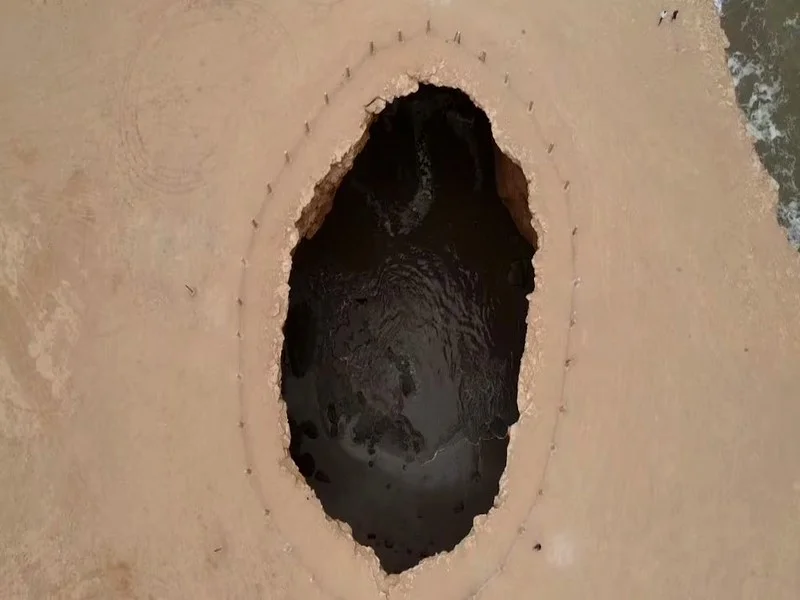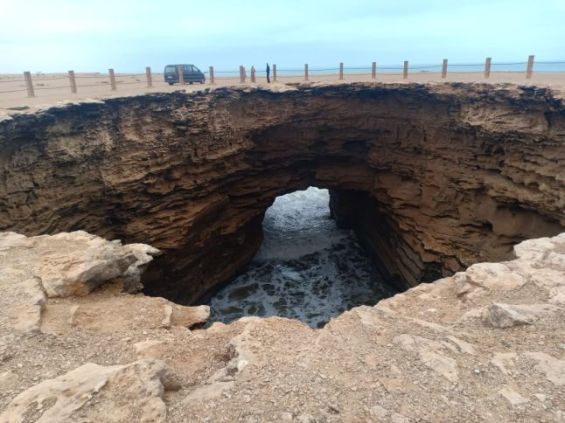It is best to visit the beaches along the coast of Tarfaya, a coastal town in western Morocco near Cape Juby, between October and April. The cooler temperatures during these months make it ideal for outdoor activities and appreciating the landscape.
This period is also popular for birdwatching, as migratory birds stop in the area, seeking suitable ecological conditions and habitats for feeding, breeding, and raising their young.
Just a couple of kilometers north of Akhfenir, a small town known for the Khenifiss National Park and the Tarfaya-Akhfenir Wind Farm, visitors can find an astonishing natural feature: a giant hole located on a cliff by the beach. This hole offers a view of a second, smaller beach below, with water and gentle waves.
 Devil's Hole. / Ph. Portail du Maroc
Devil's Hole. / Ph. Portail du Maroc
This natural wonder is known as the Devil’s Hole, though locals call it Ajb Allah, meaning «God’s miracle» or «God’s marvel» in Arabic.
Indeed, it is a marvel. The cave was shaped by years of powerful Atlantic waves, or erosion as some sugget, reminiscent of the Benagil Cave in Portugal’s Algarve region—only without the crowds, as a traveler noted in February.
An Atlantic carved grotto
Travelers describe the grotto as «beautiful and mysterious» and «full of wondrous things to explore». One travel blogger, Mehdi, praised the site’s expansive cave entrance, which leads to a maze of intriguing passages. He recommended bringing a flashlight for exploring the incredible rock formations, stalactites, and even an unusual bat cave, adding a warning to mind your step.
Another visitor, Philippe, described the Devil’s Hole as a natural sinkhole approximately 30 meters in diameter, connected to the sea, with an impressive arch carved. Photos shared by tourists show the area surrounded by barriers to prevent accidents. The hole is also accessible from the sea through the arch-shaped gate sculpted by the relentless Atlantic waves.
 Devil's Hole cave in Akhfenir. / Ph. Pin Your Footsteps
Devil's Hole cave in Akhfenir. / Ph. Pin Your Footsteps
Local environmental experts have suggested that the cave might have once been home to the Mediterranean monk seal (Monachus monachus), a species with isolated populations in regions like the Aegean Sea and Cabo Blanco in the northeastern Atlantic. A study revealed that isolated sightings of monk seals were reported along the Atlantic coast of Morocco, but no permanent populations have been observed between Agadir and Tarfaya since the 1940s, and further south since the 1970s.
The Devil's Hole has inspired locals and visitors alike to craft myths and legends around this stunning natural wonder, further adding to its mystique. Some even suggest that the hole was caused by a falling meteorite.




 chargement...
chargement...












